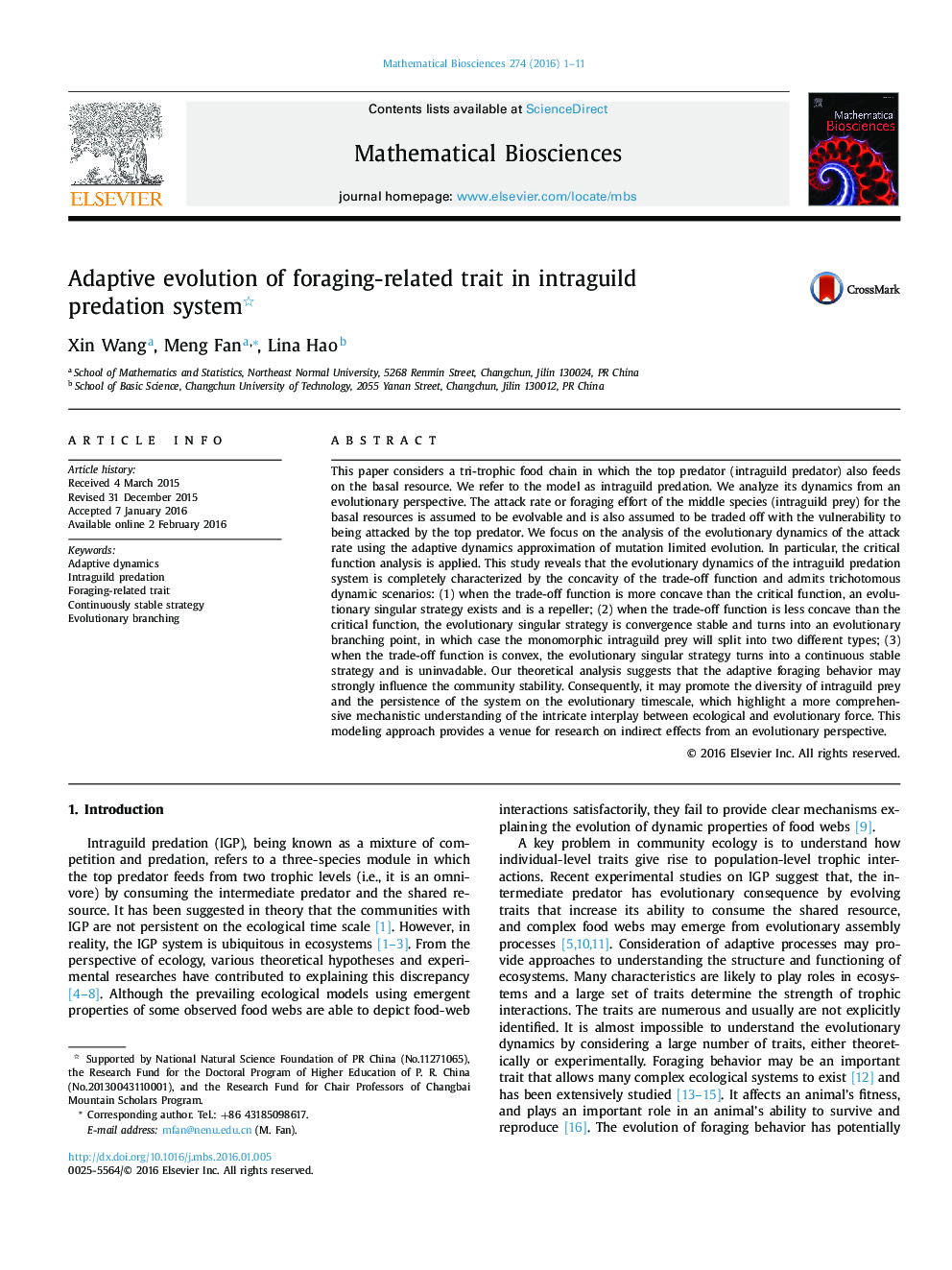| کد مقاله | کد نشریه | سال انتشار | مقاله انگلیسی | نسخه تمام متن |
|---|---|---|---|---|
| 4499853 | 1624006 | 2016 | 11 صفحه PDF | دانلود رایگان |
• The paper investigates evolution of foraging-related trait of IGprey in IGP system.
• An adaptive dynamic model is formulated to expound the evolutionary consequences.
• Trichotomous dynamic scenarios are well characterized by critical function analysis.
• The trade-off function of IGprey plays a key role in the evolutionary dynamics.
• Adaptive evolution of foraging ability promotes the coexistence of IGP system.
This paper considers a tri-trophic food chain in which the top predator (intraguild predator) also feeds on the basal resource. We refer to the model as intraguild predation. We analyze its dynamics from an evolutionary perspective. The attack rate or foraging effort of the middle species (intraguild prey) for the basal resources is assumed to be evolvable and is also assumed to be traded off with the vulnerability to being attacked by the top predator. We focus on the analysis of the evolutionary dynamics of the attack rate using the adaptive dynamics approximation of mutation limited evolution. In particular, the critical function analysis is applied. This study reveals that the evolutionary dynamics of the intraguild predation system is completely characterized by the concavity of the trade-off function and admits trichotomous dynamic scenarios: (1) when the trade-off function is more concave than the critical function, an evolutionary singular strategy exists and is a repeller; (2) when the trade-off function is less concave than the critical function, the evolutionary singular strategy is convergence stable and turns into an evolutionary branching point, in which case the monomorphic intraguild prey will split into two different types; (3) when the trade-off function is convex, the evolutionary singular strategy turns into a continuous stable strategy and is uninvadable. Our theoretical analysis suggests that the adaptive foraging behavior may strongly influence the community stability. Consequently, it may promote the diversity of intraguild prey and the persistence of the system on the evolutionary timescale, which highlight a more comprehensive mechanistic understanding of the intricate interplay between ecological and evolutionary force. This modeling approach provides a venue for research on indirect effects from an evolutionary perspective.
Journal: Mathematical Biosciences - Volume 274, April 2016, Pages 1–11
